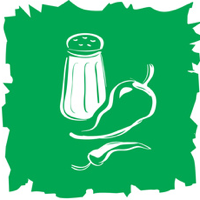Receta New Year Fish Salad (Yu Sheng)
Raciónes: 4
Ingredientes
- 1/2 x cantaloupe
- Â Â (or possibly 1/4 honeydew melon)
- 1 x grapefruit
- 1/4 c. thinly-sliced sweet pickled ginger
- 1 med carrot shredded
- 1/4 lb jicama - (a 3" wedge) shredded
- 3 Tbsp. veg. oil - (to 4)
- 1 tsp sesame oil
- 3 Tbsp. plum sauce
- 1 Tbsp. sesame seeds
- 6 ounce salmon fillet
- 6 ounce hard white fish fillet, such as sea bass
- 1 Tbsp. lime juice
- 1 Tbsp. veg. oil
- 1/2 tsp freshly-grnd white pepper
- 1/4 c. minced roasted peanuts
- 1 x green onion slivered
Direcciones
- Peel melon and cut into crescents. Segment grapefruit by cutting away the peel and white pith; cut and lift out segments. In a bowl, combine melon, grapefruit. ginger, carrot, and jicama.
- Combine dressing ingredients in a small bowl.
- Place sesame seed in a small frying pan over medium heat; cook, shaking pan continuously, till tightly browned, 3 to 4 min. Immediately remove from pan to cold.
- Remove skin and any bones from fish. Thinly slice fish across the grain to make pcs about 1 by 2 inches. Fan slices on a serving platter, alternating pink and white fish. In a small bowl, combine lime juice, oil, and white pepper.
- Drizzle lime juice mix over fish. Mound salad mix in center of fish. Spoon dressing over the salad. Garnish with peanuts, sesame seed, and green onion.
- This recipe yields 4 to 6 servings.
- Comments: No Chinese New Year feast is complete without yu sheng, the colorful salad of raw fish and crunchy vegetables. It's served in most Singaporean Chinese restaurants throughout the lunar new year celebration. In recent years, the ingredients have become increasingly elaborate and exotic, including jellyfish, preserved papaya, deep-fried yam sticks, pickled shallots, and more. You practically have to start making it a whole lunar year ahead of time! My version is light and flavorful and a lot easier to prepare. Use very fresh fish. As an alternative to salmon, tuna is also delicious prepared this way.
- Besides being full of flavors and textures, yu sheng is loaded with symbolic meaning. The raw ingredients signify the renewal of life, and the sound of the word for fish in Cantonese sounds like the word for prosperity. The most important (and fun) part of eating yu sheng is the mixing together of the ingredients. To ensure good luck for the coming year, everyone calls out "Lo hei!" - that means "to mix it up" but also sounds like "to prosper more and more" - while they use their chopsticks to toss the ingredients as high in the air as they can. Now which's what I call a well-tossed salad!
Languages
Nutrition Facts
| Amount Per Serving | %DV |
|---|---|
| Serving Size 197g | |
| Recipe makes 4 servings | |
| Calories 354 | |
| Calories from Fat 236 | 67% |
| Total Fat 26.6g | 33% |
| Saturated Fat 3.48g | 14% |
| Trans Fat 0.35g | |
| Cholesterol 23mg | 8% |
| Sodium 159mg | 7% |
| Potassium 479mg | 14% |
| Total Carbs 18.63g | 5% |
| Dietary Fiber 3.7g | 12% |
| Sugars 13.64g | 9% |
| Protein 12.6g | 20% |



